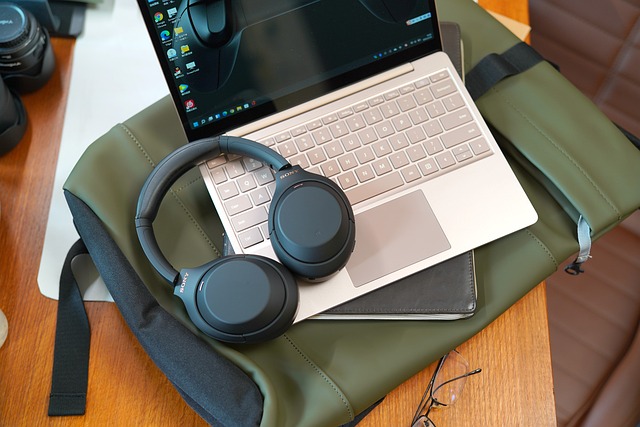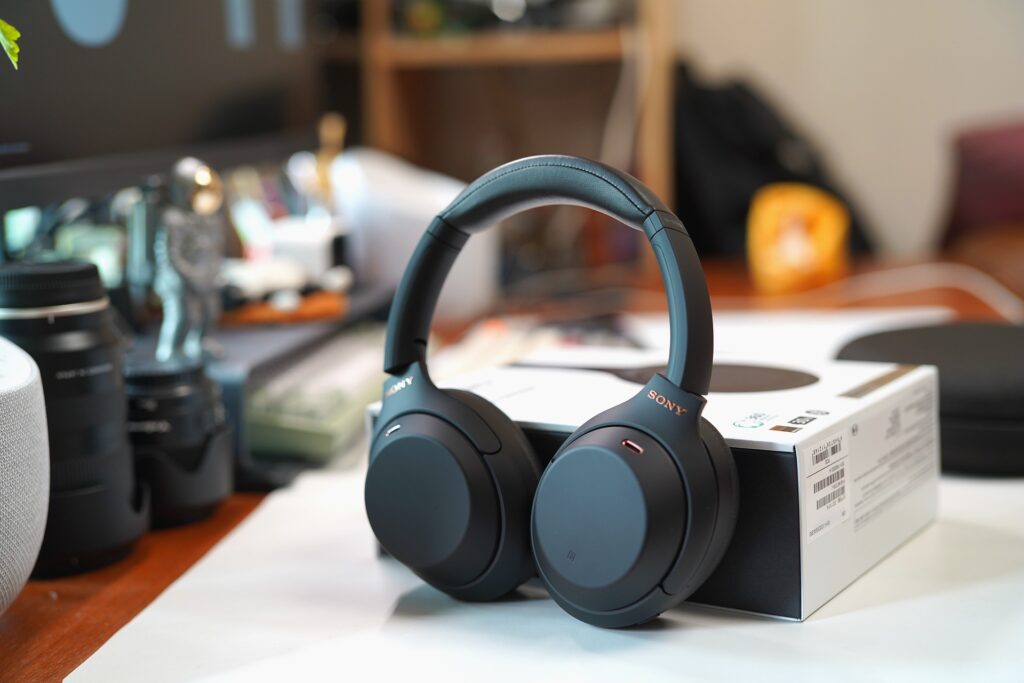How can I separate my speaker and headphones sound Windows 10?
If you are someone who regularly switches between headphones and speakers while working on your Windows 10 PC, you might have noticed that the audio output always goes through the default device.
This can be inconvenient if you want to play music on speakers while attending a video call with headphones.
But worry not, as we have a solution for you!

If you interested in knowing how can I separate my speaker and headphones’ sound from windows 10? then keep reading.
In this article, we will guide you through the step-by-step process.
So, without any further ado, let’s jump into the realm of separating your speaker and headphones’ sound in Windows 10.
By the end of this article, you’ll be able to enjoy your favorite media without any sound-related problems.
7 instant steps to separate my speaker and headphones sound Windows 10?
Step 1: Check your Sound Settings
The first step is to check your sound settings to ensure that your speaker and headphone sound is not combined. Here’s how to do it:
- Right-click the sound icon in the taskbar and select “Open Sound Settings.”
- In the “Output” section, ensure that your headphones or speakers are selected as the default audio device.
- Click on the “Device properties” link and select the “Additional device properties” option.
- In the “Advanced” tab, select the “Separate all input jacks as independent devices” option.
- Click “Apply” and “OK” to save your changes.
Step 2: Disable Sound Enhancements
If you’re still having trouble separating your speaker and headphone sound, the next step is to disable sound enhancements. Here’s how:
- Right-click the sound icon in the taskbar and select “Open Sound Settings.”
- Click on the “Device properties” link and select the “Additional device properties” option.
- In the “Enhancements” tab, check the “Disable all enhancements” option.
- Click “Apply” and “OK” to save your changes.
Step 3: Check your Audio Drivers
If disabling sound enhancements does not resolve the issue, you may need to update or reinstall your audio drivers. Here’s how:
- Press the Windows key + X and select “Device Manager.”
- Expand the “Sound, video, and game controllers” section.
- Right-click on your audio device and select “Update driver.”
- Follow the on-screen instructions to update your driver.
- If updating the driver does not solve the issue, try uninstalling and reinstalling it.
Step 4: Use Third-Party Software
If none of the above steps works, you can try using third-party software to separate your speaker and headphone sound. Here are a few examples:
- EarTrumpet: EarTrumpet is a free third-party app that lets you control audio on Windows 10.
- AudioSwitcher: AudioSwitcher is a free app allowing you to easily switch between audio devices.
- Audio Router: An audio Router is a free app that routes audio from any application to any output device.
Step 5: Use Windows Sound Mixer
If you have different applications that use different audio devices, you can use the Windows sound mixer to route their audio to the desired device.
Here’s how to do it:

- Right-click the sound icon in the taskbar and select “Open Volume Mixer.”
- In the Volume Mixer, you can adjust the volume for each application separately.
- Click on the down arrow next to the volume slider and select the desired audio device from the dropdown menu.
Step 6: Set up Sound Profiles
If you use different audio devices for different purposes, you can set up sound profiles in Windows 10. Here’s how:
- Right-click the sound icon in the taskbar and select “Open Sound Settings.”
- Click on the “Sound Control Panel” link located under the “Related settings” section.
- In the “Playback” tab, select the audio device you want to create a sound profile for and click on the “Properties” button.
- In the “Properties” window, select the “Custom” tab and click on the “Create” button to create a new sound profile.
- In the “Name” field, enter a name for the sound profile, and then select the settings you want to apply to the profile.
- Click “Apply” and “OK” to save the changes.
Step 7: Use Keyboard Shortcuts
You can use keyboard shortcuts if you want to quickly switch between your speaker and headphones. Here’s how to do it:
- Press the Windows key + I to open the Windows Settings.
- Click on “System” and then select “Sound.”
- Under the “Output” section, click on the dropdown menu and select the audio device you want to use.
- Click on the “App volume and device preferences” link.
- Under the “Output” section, you can set the volume and choose the audio device for each app.
- Use the “Ctrl + Shift + S” keyboard shortcut to switch between audio devices.
Troubleshooting common issues on “How can I separate my speaker and headphones sound Windows 10?”
As with any technology, there may be some common issues that you encounter when trying to separate your speaker and headphones’ sound in Windows 10.
Here are some troubleshooting steps you can take to resolve them:
1. Audio output still goes through the default device:
If you have followed all the steps mentioned in the article and are still experiencing this issue, try restarting your PC. If that doesn’t work, try unplugging and re-plugging in your headphones or speakers.
2. Sound settings keep resetting:
If you find that your sound settings keep resetting, you may need to check if there are any updates available for your audio driver. You can do this by following the instructions in step 3 of the article.
3. Device not showing up in sound settings:
If your headphones or speakers are not showing up in the sound settings, try unplugging and re-plugging them in. If that doesn’t work, try updating your audio driver by following the instructions in step 3 of the article.
4. Sound quality issues:
If you are experiencing sound quality issues such as crackling or popping sounds, try updating your audio driver or disabling sound enhancements as mentioned in steps 2 and 3 of the article.

By following these troubleshooting steps, you should be able to resolve any common issues you encounter while trying to separate your speaker and headphones’ sound in Windows 10.
If you continue to experience issues, it may be worth seeking help from a professional or contacting Microsoft support.
Frequently Asked Questions
How do I separate my speakers and headphones in Windows 10?
To separate your speakers and headphones in Windows 10, follow these steps: Although in case if the sound doesn’t automatically switch to headphones, Windows 10.
- Right-click on the speaker icon located in the taskbar.
- Click on “Open Sound settings.”
- Under the “Output” section, click on the “Manage sound devices” option.
- Find your headphones and click “Set as Default.”
- Your audio output will now be directed to your headphones instead of the speakers.
How do I split audio from my computer speakers and headphones?
To split audio from your computer speakers and headphones, you can use a software tool called Audio Router. Here’s how to use it:
- Download and install Audio Router.
- Open the application and select your audio source from the drop-down menu.
- Click on the “+” icon to add a new audio destination.
- Select your headphones as the new audio destination.
- Adjust the audio volume for each destination as desired.
- Now, the audio output will be split between your computer speakers and headphones.
How do I separate audio outputs in Windows 10?
To separate audio outputs in Windows 10, you can use a tool called Audio Switcher. Here’s how to use it:
- Download and install Audio Switcher.
- Open the application and select your audio source from the drop-down menu.
- Click on the “+” icon to add a new audio destination.
- Select your headphones as the new audio destination.
- Click on the gear icon next to the headphone destination to adjust the audio settings as desired.
- Now, the audio output will be directed to your headphones instead of the speakers.
Can you split the audio output the on PC?
You can split audio output on a PC using third-party software tools such as Audio Router and Audio Switcher. These tools allow you to simultaneously direct audio output to different sources, such as speakers and headphones.
By default, Windows 10 does not provide a built-in option to split audio output, so third-party tools are necessary.
How do I fix audio problems on Windows 10?
To fix audio problems on Windows 10, you can check your sound settings, disable sound enhancements, update or reinstall your audio drivers, and use third-party software.
How do I switch between speakers and headphones on Windows 10?
You can switch between speakers and headphones on Windows 10 by selecting the desired audio device
What if I don’t see the “Additional device properties” option?
If you don’t see the “Additional device properties” option, it means that your audio driver does not support it. You can try updating or reinstalling your audio driver.
Conclusion
Separating your speaker and headphones’ sound in Windows 10 can be a bit tricky, but it’s definitely worth it to enjoy your media without any sound-related problems.
By following the steps mentioned in this article, you can easily separate your speaker and headphones’ sound in Windows 10.
Whether you want to play music on speakers while attending a video call with headphones or switch between different audio devices for different purposes, these steps will help you achieve that.
We hope this article has been helpful in addressing your question of “How can I separate my speaker and headphones sound Windows 10?” and that you are now able to enjoy your media without any sound-related problems.
If you have any comments or suggestions, please feel free to leave them below. Thank you for reading!


